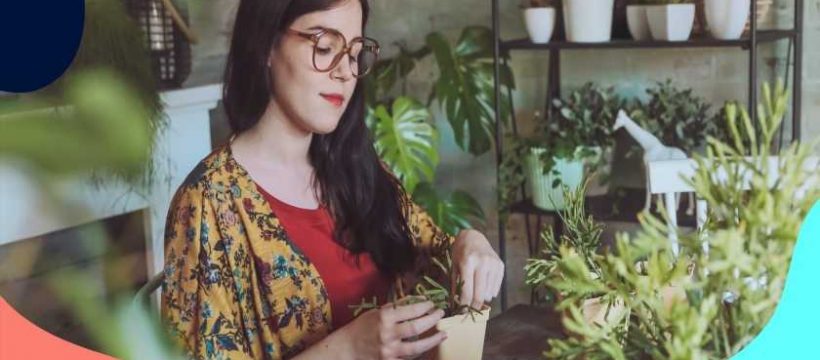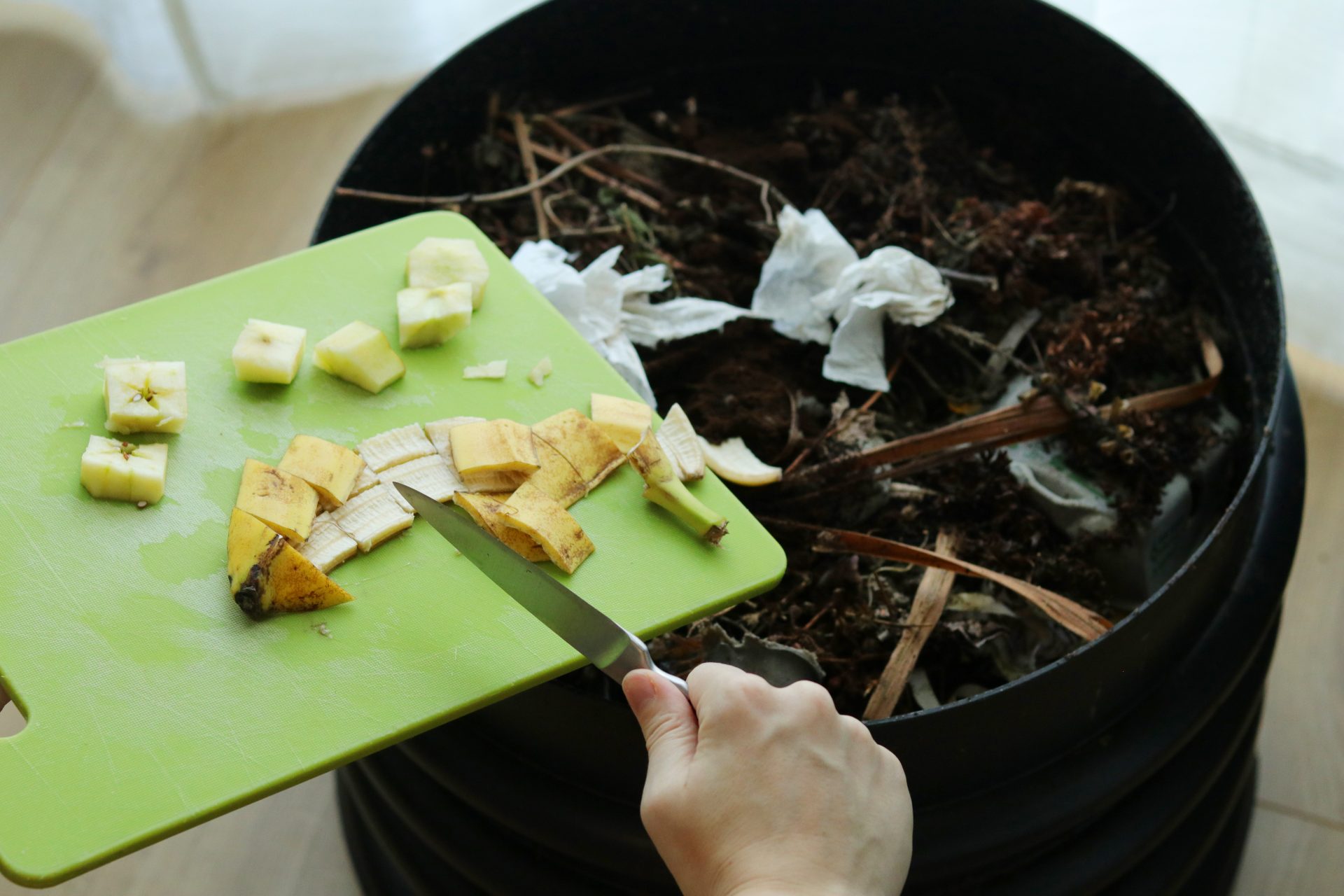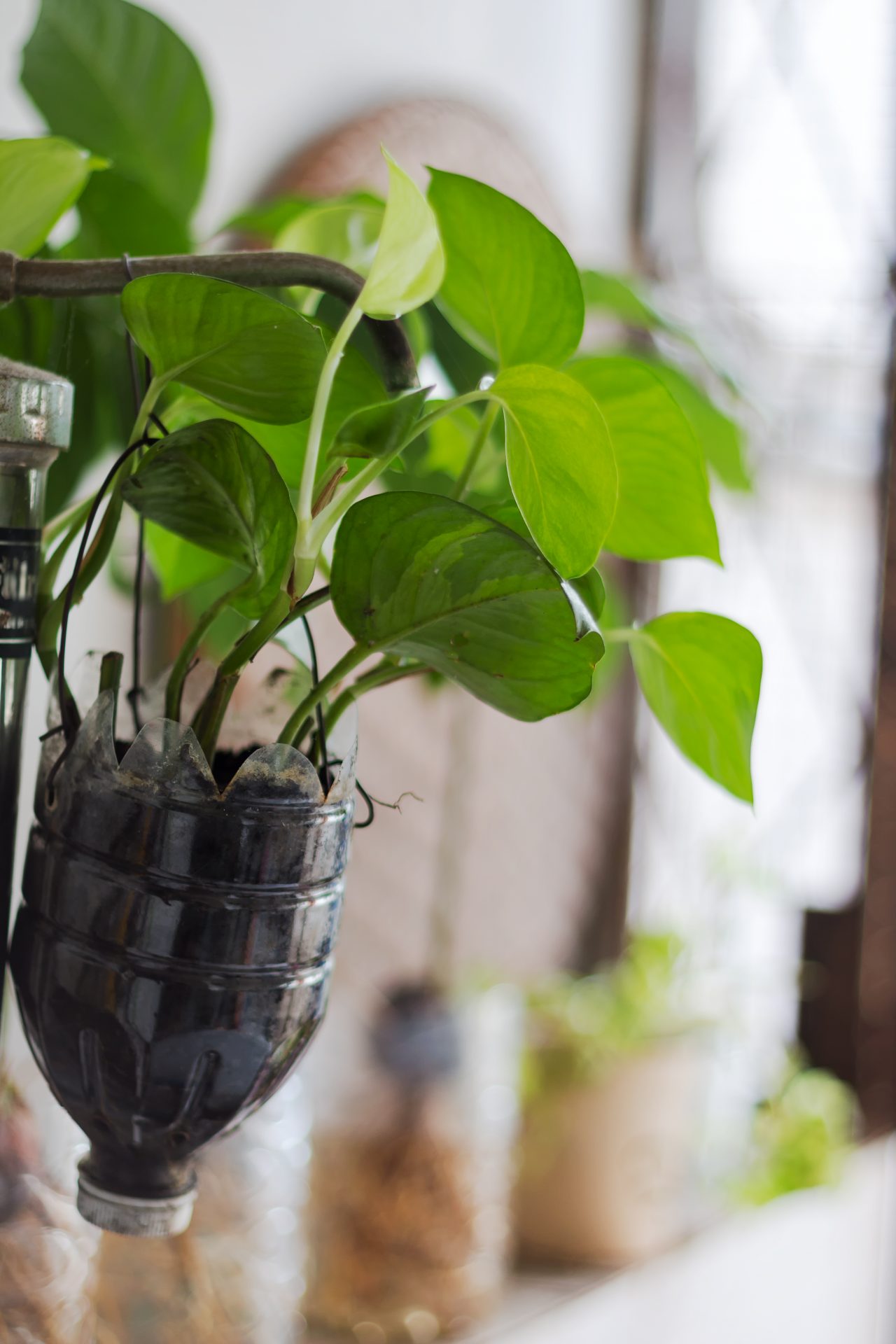TikTok is teaching us a lot, from DIY haircuts to trendy food finds, and now gardening hacks. We’ve rounded up five beginner-friendly gardening tips that are taking the app by storm. Here, an expert explains how they can help you save money and the planet.
Welcome to The Curiosity Academy, Stylist’s new learning hub where you can access workshops, how-to guides, new research and learn the most up-to-date skills from the UK’s most in-the-know people.
Social media has played a huge role in popularising gardening as a rewarding pastime during the pandemic. You can hardly scroll without coming across a useful hack for growing or preening your plant friends.
Recently, TikTokers have taken to sharing the clever adaptations their parents have made to their home gardens with the purpose of making them more sustainable and budget-friendly. And the best thing about it is that you don’t have to be a seasoned gardener to borrow from their ingenuity.
Collecting rainwater or making your own compost might not seem like lightbulb ideas, but small changes in this vein can have an impact on the planet at large, far beyond your small patch of greenery.
In the excited rush to nurture new plants and produce, many of us are missing out on chances to make easy, sustainable changes. Elizabeth Waddington, a gardening expert at Horticulture and sustainability consultant, says, “Many new gardeners fail to recognise the potential to use natural and reclaimed resources already around them.”
But, she’s willing to teach, and here she shares why these TikTok hacks are the ticket to a more eco and wallet-friendly home garden.
You may also like
No garden? No problem. An expert guide to growing food at home
Use old homeware instead of buying new planters and pots
If you’re already making ethical choices in other areas of your life, such as buying secondhand clothes or growing your own food from kitchen scraps, you’ll be familiar with the concept of repurposing. The people of TikTok may be using old bathtubs to make ornamental planters, but this can be practised on a small scale too.
According to Elizabeth, reusing food packaging and other reclaimed homeware “can help you reduce waste, and grow food even in the smallest of spaces.” She explains: “You can reduce the burden of waste on municipal systems and keep it from landfill, while also taking steps to reduce your own consumption – both of food and garden products.”
How to use old homeware in your home garden
This hack is small space-friendly. “Even when growing indoors on a windowsill, you can use toilet roll tubes, old cardboard boxes, and plastic food packaging trays to start seeds. And old yogurt pots and other food packaging make great containers for many smaller plants and herbs.”
If you have a bigger space, you can make more of your waste and Elizabeth suggests considering the potential in everything, saying, “Outdoors, many reclaimed items can be used to make planters – old bathtubs, sinks, washing machine drums, plastic or wooden barrels, metal drums – there are many options to consider.”
You may also like
10 beautiful Instagram accounts to follow if you love plants (and don’t want to kill them)
Make your own worm compost
Compost enriches soil with nutrients that help your plants grow. Although you could just throw food scraps on a mound and wait for nature to do its thing, Elizabeth says worm composting “reduces waste, cuts cost, and gives you a very useful material for maintaining a garden, and growing your own food.”
Buying worms for your compost farm might seem like an unnecessary expense to begin with, but it’s actually an astute investment in the health of your garden.
“Worm casts have been shown to be extremely beneficial for the soil. Not only do they contain high nutrient levels, they have also been shown to contain fewer contaminants than the waste they have eaten. So, using worms to create compost can keep some harmful substances and pollutants out of your garden soil,” explains Waddington.
How to make your own worm compost
A Wormery is essentially a container that contains organic, compostable materials like food waste for the worms to consume. It can be kept indoors or outdoors so can easily be used even if you don’t have much outdoor space. You can choose to buy or make your own wormery. To DIY it, make sure it ticks the following boxes:
- Allows the worms to breathe but not crawl out.
- Has a tap or pluggable hole that allows you to release any liquid runoff so the worms don’t drown.
- Have a lid that allows easy access to replenish and retrieve the compost.
- Is stored in a place with temperatures between 10-25°C.
- Has about 500g of either eisenia hortensis or eisenia foetida worms to start with.
You may also like
5 ways to start urban gardening, however small your space
Grow in your front garden
Elizabeth says “”Front gardens are often under-utilised spaces.” So, if you have one that’s only sporting a lawn, it may be time to think outside the box, or at least the back garden.
Although we associate front yards with more aesthetically pleasing plants and flowers, “planting common vegetable crops with flowers and herbs is a good strategy in an organic garden, and can make your front yard beautiful as well as productive,” Elizabeth explains.
Plants to grow in your front garden
There are tons of flowering plants and herbs that wont look out of place growing in front of your home. Some easy vegetables you should look into growing include: fava beans, peas, lettuce, cabbage family plants, potatoes, onions, radishes, beets and carrots.
To add a little colour and biodiversity to your front garden, Elizabeth suggests you “Companion plant with culinary herbs, and flowers like marigolds, calendula, nasturtiums and borage.” Avoid leaving your garden bare in the winter by planting winter crops after you’ve harvested your summer produce.
You may also like
Make a beautiful window planter box with these expert tips
Grow vertically
Whether space is at a premium or not, growing upwards is a great way to get the most out of your plant pursuits. Elizabeth says: “It does not matter how much space you have, vertical gardening can be a good way to make the most of your space and maximise yield.”
If you’re overwhelmed with turning a large space into a viable vegetable garden, starting out with a vertical project can help to make you feel more comfortable with caring for plants. In instances where you have no outdoor space, a sunny ledge or window sill will do.
Plants to grow vertically
Elizabeth suggests starting out with “climbing or vining plants like beans, cucumbers, tomatoes.” To begin growing, she says, “Create some simple trellis by using pruned branches from your garden or bamboo canes, tied together with natural twine. Then place some old five-gallon buckets or other reclaimed containers at the base and use these to grow.”
In smaller spaces, Elizabeth advises: “Use old plastic drink bottles to make planting towers, with holes in the sides to grow strawberries, lettuce, herbs and other edibles.”
Harvest rainwater
Living in a wet climate might not be the dream, but when it comes to conserving water it’s a huge plus. Elizabeth explains, “Even in areas where rainwater does not seem to be in short supply, we need to remember that fresh water is a precious resource. By keeping it on our properties, we can reduce or eliminate the use of fresh water from mains supplies in watering our plants.”
How to harvest rainwater
Ever held your hands out trying to catch raindrops? This hack is as easy as that – just with viable containers.
You don’t need any specialist equipment to harvest rainwater, Elizabeth says the process can “simply involve adding a barrel, butt or tank to the downspout or guttering of your property.” Just collect, use, let nature replenish and save money on your watering bill.
If you live in a small space, you can hang containers from the guttering to collect the rainwater.
-
Elizabeth Waddington, gardening expert and sustainability consultant
Elizabeth is a writer, garden designer and sustainability consultant. Elizabeth has honed her gardening skills on her own rural property over the past 7 years, and on her allotment prior to that. She works as a writer, garden designer and sustainability consultant. With an MA in English and Philosophy, Elizabeth has learned horticulture hands-on in the real world, as well as through in-depth research into sustainable models of living and growing.
Since obtaining her PDC, she has completed many permaculture designs for gardeners and farmers around the world – from Highland crofts, to Welsh community gardens, and urban gardens, to country homesteads. Through her work and her own lifestyle, she continues to do all she can to facilitate sustainable change and keep her own and other people’s gardens growing.
Images: Getty, and courtesy of Elizabeth Waddington
Source: Read Full Article


